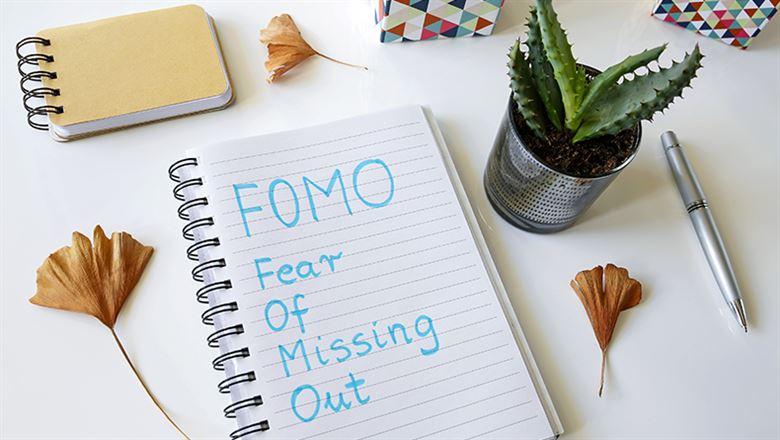Alyssa Gibson
Alyssa Gibson is specialist, content development and education at the American Alliance of Orthopaedic Executives in Indianapolis.

FOMO, or fear of missing out, can be a useful strategy to get members to attend in-person and virtual events. Here are 10 ways to instill urgency and engagement into events.
Associations may struggle to get members to events, conferences, and webinars. After all, they’re strapped for time, budgets are tight, and resources are popping up every day competing for their attention.
To get people to pay attention and participate in events, associations must find ways to create FOMO (fear of missing out). Here are 10 ways to do just that:
1. Get members involved as microvolunteers. Involve different segments of members in the session review and selection process. A diverse review committee will help ensure that the topics selected will resonate with more people. Plus, it creates a microvolunteering opportunity for members that will boost their engagement with the association.
2. Offer fresh learning formats. Experiment with new learning formats and room sets to create unique and authentic experiences. Attendees are tired of being talked at in panel presentations. Add in some brain breaks: funny, light-hearted, or off-topic sessions that will reset attendees’ minds.
3. Listen, react, plan, and report back. If attendees at a previous event complained about something that can be fixed—like exhibit hall hours, session length, or coffee availability—change it for the next event and make sure members know they were heard. A simple “you asked, we listened” message may be enough to encourage disgruntled—or worse, under-caffeinated—members to return. It also lends itself to an effective FOMO message: “Don’t miss the new networking events you asked for!”
4. Encourage speaker and influencer marketing. The best marketing comes from the stars at an event—the people who will captivate attendees either onsite or offsite. Encourage speakers to tell their story via online video to connect with members and explain why their session will be fun, different, and engaging. Share these videos on all platforms, including the conference’s website, social media, blog, or e-newsletter.
5. Establish creative drip campaigns. Information about an event should be released like a steady drumbeat. This will pique members’ interest and keep the event front of mind. A preliminary program should only provide need-to-know details in one convenient place. In fact, many attendees arrive at the American Alliance of Orthopaedic Executives’ (AAOE) events with a marked-up guide tucked under their arm. To create FOMO, more frequent, consistent touches are necessary.
Information about an event should be released like a steady drumbeat. This will pique members’ interest and keep the event front of mind.
6. Create a conference survival guide. This communication is a basic know-before-you-go email on steroids. It has the necessary information, but also fun facts, reminders for event experiences, and tips for staying sane while trying to be in the moment and learning while attendees’ inboxes fill up. This year, AAOE will include this information in a PDF-file format so that registrants can download, save, or print the guide for easy reference.
7. Conduct a virtual orientation. Conferences can feel overwhelming for even the most extroverted person. To help engage first-time attendees and experienced members alike, consider a virtual orientation session. This on-demand session will not only provide event basics but can also help build buzz about the conference. Be sure to cover any outside-the-box experiences and highlight the creative elements of the venue, experience, or speakers. Also consider using members as influencers to share insights and advice.
8. Take advantage of an app. A mobile app is a great way to engage attendees onsite at the conference, but it can also be an effective tool at driving engagement before they step foot in the venue. Plan a mobile app game that attendees can play to win prizes, and start the game before the conference begins. For example, create a photo contest where attendees submit photos for various categories, such as preparing for or traveling to the conference, to encourage them to download and begin using the app before they arrive.
9. Offer opportunities to give back. AAOE partners with a local charity to give back to the community and to engage members in the months leading up to a conference. Getting-to-know-you emails are sent out to members and detail the charity’s mission and how members can get involved or help out.
In 2018, AAOE took a multiprong approach to give back, and it went viral. From social media to email signature badges, to sponsored ads in the event program, AAOE raised more than $32,000 to Give Kids the World. Much of this fundraising came from a successful T-shirt sale. Members could purchase shirts either in advance of the conference or onsite, and once attendees saw how many people wore them, others scrambled to donate and buy shirts before they sold out.
10. Offer a livestream. No matter how effective your FOMO strategies are, some members just simply won’t be able to attend the conference due to budget, prior engagements, or lack of time. That doesn’t mean you should forget about them. Include these members by livestreaming one or two of the most popular sessions. Promote these livestreams well in advance, so that members can add it to their calendar. Tell them how they can tune in, and share the recordings afterward. Giving them a glimpse into the conference may induce the greatest feeling of FOMO yet.